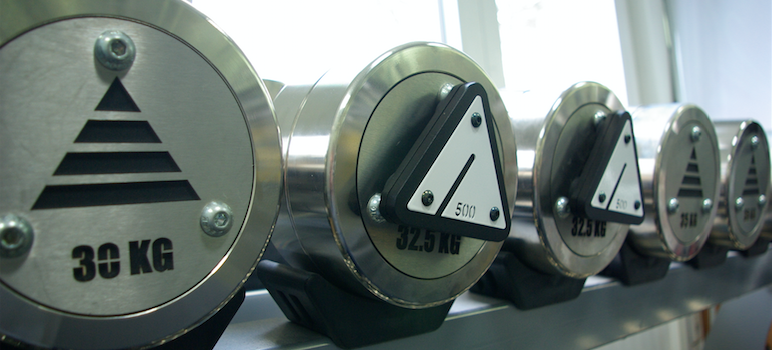Ask the Coach” is the column in which Wolfgang Unsöld answers your questions. The book of the same name was published by Riva Verlag and Available right here on Amazon.
Question: Hello Wolfgang! I have a question. You use “microperiodization” ( article here ) in your training plans and often increase the training weight to a heavy set. Tested in practice, this is not a problem with barbell training, I also got micro-plates with which I can increase in 0.5 kg increments. This is difficult when training with dumbbells, because my gym only offers increases of 2 kg, which means a total increase of 4 kg and causes difficulties, especially when training small muscle groups such as arms. Can you give me a tip on how to increase the weight differently in a smart way? Thanks for your answer! Greetings Jan K.
WU: Basically, microloading, ie increasing training weights in small steps, is an essential part of my training philosophy and an important tool to enable constant progression. After all, constant progression is the essence of successful training. Your purchase of the small discs (microplates) is an excellent investment. We also have a whole range from 0.5 to 2kg in the YPSI. In particular, the Eleiko Friction Plates are in constant use with us due to their efficient handling and double function as a clamp. However, the regular microplates are only suitable for barbell training, as you have already pointed out.
For dumbbells and weight stacks on machines like the leg curl, I use and recommend magnetic microplates that stick to the metal of a dumbbell and weight stack. Two important characteristics of magnetic microplates are adhesion strength and handling. That means the magnets have to be so strong that the microplates don't slip off the dumbbell during the concentric. Especially with exercises such as dumbbell presses, a weakly adhering magnet would pose a safety risk. I personally know of a case of a trainer who bought microplates that didn't adhere well enough and slipped off the dumbbell flat bench press of the trainee. The result was a laceration on the eyebrow. The simple conclusion is, magnetic microplates need to be strong enough so that they don't slip off the bar easily.
On the other hand, handling is crucial because the magnetic microplates can be attached and removed easily and efficiently. One of the reasons for the VA7 microplates is that they are triangular in shape, but only have magnets in two of the three corners. There is no magnet on the lower right corner, so it is very easy to lift and remove the microplates at this corner. Without tedious pushing or the use of a tool.
The primary area of application for microloading is dumbbell exercises in the moderate performance range, since the jumps from dumbbell to dumbbell. Going from 10kg to 12.5kg is a whopping 25% more. A relatively large hurdle, especially with the KH bench press variants for women and Kh curl variants for men in the 10 to 25kg range as well as assistance exercises such as external rotation, bent lateral raises and the trap 3 raise. In contrast, micoloading is less interesting for exercises such as squats and deadlifts because the weights used are heavier and the percentage increase is therefore absolutely lower. An expected increase per workout is 2% to 4%. For KH curls with 15g this corresponds to 0.3kg to 0.6kg, microplates are an excellent tool for this. For LH squats of 150kg, this equates to 3-6kg, so microplates are less critical.
Good luck with the magnetic Micro-Plates!
VA7's magnetic microplates are available right here
Discount for YPSI trainers is available on VA7 products. Details on this in the YPSI Forum .
Image: Magnetic microplates attached to a dumbbell.

